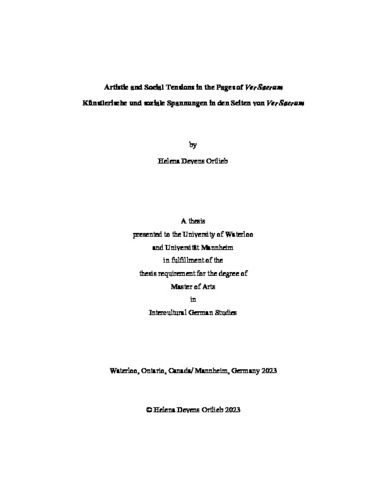| dc.description.abstract | Vienna has for a long time fascinated scholars of history, art, politics and culture. A unique cultural hub at the turn of the twentieth century, Vienna was a modern city and home to many well-known artistic masters. In the fin-de-siècle, Vienna was a bustling center for change, ripe with tradition yet teeming with modern ideas that paved the way for the internal clashes, tensions, and conflicts that permeated the city. Fin-de-siècle Vienna saw one of the most famous artistic separations in Austrian, if not European, history. Young, modern-thinking artists separated from their traditional and rigid forefathers to create the Secession movement in 1897. The group, Die Vereinigung bildender Künstler Österreichs, with Gustav Klimt (1862-1918) and Koloman Moser (1868-1918) at the helm, consisted of modern artists whose mediums ranged from painting to architecture, and their legacy would eventually include a museum, the Secessionsgebäude, and an art journal, Ver Sacrum (1898-1903).
In three essays, focusing on Gustav Klimt’s controversial artwork, depictions of the naked body, and Rainer Maria Rilke’s (1875-1926) contributions to the journal, this thesis explores the artistic and cultural tensions that permeated the pages of Ver Sacrum and demonstrates the journal’s role in fin-de-siècle Viennese cultural creation. Using Ver Sacrum to study and understand fin-de-siècle Vienna, this thesis demonstrates how the journal was influenced by the tensions of modern Vienna and how, at the same time, it contributed to those tensions. Emphasizing the journal’s recognition of and contributions to the artistic and social tensions that permeated fin-de-siècle Vienna, this thesis explores Ver Sacrum’s significant place in the creation and understanding of Viennese art and cultural history. | en |

